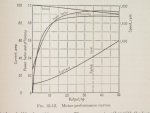Everyone:
I seem to be very confused.
We were doing a routine maintenance check to measure the current draw on a 3 phase motor as it compares to its name plate FLC rating. The FLC is about 6A and we took an Amp probe and measured 3A on one phase. I've always thought that with a one phase amp probe reading you have to multiply the reading by 1.732 (so turns out to be about 5.196A) in order to convert it to the line current draw so we can compare it to the FLC rating on the motor name plate.
Is this a correct statement?
I seem to be very confused.
We were doing a routine maintenance check to measure the current draw on a 3 phase motor as it compares to its name plate FLC rating. The FLC is about 6A and we took an Amp probe and measured 3A on one phase. I've always thought that with a one phase amp probe reading you have to multiply the reading by 1.732 (so turns out to be about 5.196A) in order to convert it to the line current draw so we can compare it to the FLC rating on the motor name plate.
Is this a correct statement?


